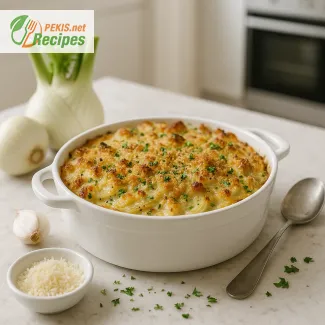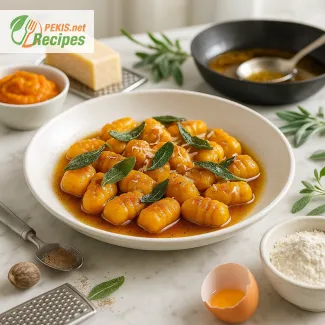
Few dishes embody the elegance and simplicity of Italian cuisine as perfectly as Spaghetti Carbonara with pancetta. This classic Roman dish, beloved by food enthusiasts around the world, is a testament to the harmony that can be achieved through just a handful of high-quality ingredients. Its roots lie in the Lazio region of Italy, where generations of home cooks and chefs have refined the art of transforming pantry staples into a deeply satisfying, luxurious meal. When crafted with care, Carbonara offers a symphony of rich flavors and textures that elevate an otherwise humble plate of pasta into an unforgettable culinary experience.
The Heart of the Dish: Pancetta
Pancetta, the unsmoked Italian bacon made from pork belly, plays a starring role in Spaghetti Carbonara. Its rich, slightly salty, and intensely savory flavor contrasts beautifully with the creamy sauce, infusing the dish with a deep, meaty complexity. The pancetta is traditionally cut into small cubes or thin strips and slowly sautéed to render its fat, creating golden, crispy morsels that add both texture and flavor to the finished plate. As the fat melts and coats the pasta, it creates a luscious base that is essential to the dish’s signature velvety mouthfeel.
Unlike the Americanized versions of Carbonara that sometimes feature heavy cream, the authentic recipe relies on pancetta’s rendered fat to emulsify the sauce, binding it to the spaghetti in a way that feels light yet indulgent. The pancetta's crispy edges and juicy interior provide a textural contrast that complements the smoothness of the pasta, creating a satisfying bite in every forkful.
The Perfect Pasta: Spaghetti
The choice of pasta is crucial in Carbonara, and spaghetti is the quintessential choice for this dish. The long, thin strands of spaghetti have just the right surface area to cling to the rich sauce, ensuring that each bite is evenly coated with the luscious mixture of pancetta, eggs, and cheese. As the hot spaghetti meets the raw egg mixture, it transforms into a creamy, luxurious sauce that gently envelops the pasta, without becoming overly heavy or cloying.
The key to achieving the perfect texture in Spaghetti Carbonara lies in cooking the pasta to a perfect "al dente" texture—firm to the bite but not hard. This slight firmness allows the spaghetti to stand up to the richness of the sauce while retaining a pleasant bite, ensuring that the dish remains balanced and satisfying.
The Silken Sauce: Eggs and Pecorino Romano
At the heart of Spaghetti Carbonara’s silky sauce is a mixture of eggs and Pecorino Romano cheese. The beauty of this sauce is its simplicity—no cream is required. The key to mastering Carbonara lies in the technique: whisking together eggs and finely grated Pecorino Romano cheese until a smooth, thick mixture forms. The eggs are gently cooked by the heat of the pasta, creating a creamy, velvety coating that binds the dish together.
Pecorino Romano, a hard sheep’s milk cheese with a sharp, salty flavor, is the traditional choice for Carbonara. Its distinct, tangy profile perfectly balances the richness of the pancetta and eggs, adding depth and complexity to the dish. While some modern variations of Carbonara may include Parmesan or a blend of both cheeses, Pecorino Romano remains the gold standard for achieving the authentic, punchy flavor that defines this dish.
As the cheese melts into the warm pasta, it mingles with the eggs to create a sauce that is rich but never heavy, smooth but never overly thick. The sauce should lightly coat the spaghetti without pooling at the bottom of the plate, resulting in a dish that feels light and indulgent at the same time.
A Touch of Freshly Cracked Pepper
One of the most important but often overlooked elements of Spaghetti Carbonara is freshly cracked black pepper. More than just a seasoning, the pepper in Carbonara acts as a crucial flavor component, adding warmth and a subtle kick that cuts through the richness of the pancetta and cheese. Generous amounts of coarsely ground black pepper are traditionally stirred into the sauce just before serving, lending the dish a fragrant, spicy complexity that enhances its overall flavor profile.
The pepper’s boldness complements the saltiness of the pancetta and the sharpness of the Pecorino Romano, bringing a nuanced balance to the dish. Its coarse texture also adds a bit of grit to the otherwise smooth sauce, making each bite just a little more interesting.
A Dish of Elegance and Comfort
Spaghetti Carbonara with pancetta is a dish that effortlessly bridges the gap between rustic comfort food and refined dining. Its origins may lie in the kitchens of Italian peasants, but its execution is nothing short of elegant. The dish celebrates the beauty of restraint, relying on just a few simple ingredients to create something far greater than the sum of its parts.
At its core, Spaghetti Carbonara is a dish that demands attention to detail. The timing must be perfect: the pasta needs to be hot enough to gently cook the eggs without scrambling them, and the pancetta must be crisp yet tender. But when these elements come together in harmony, the result is pure magic—a dish that is creamy without being heavy, rich without being overwhelming, and indulgent without being excessive.
Pairing Carbonara with the Perfect Wine
The flavors of Spaghetti Carbonara with pancetta are bold and complex, and they deserve to be paired with a wine that can hold its own against the dish’s richness. A crisp, dry white wine like a Pinot Grigio or a light Italian red such as Chianti are classic choices that help cut through the richness of the sauce while complementing the savory notes of the pancetta. The wine’s acidity balances the creaminess of the egg-based sauce, while its light body ensures that it doesn’t overpower the delicate flavors of the pasta and cheese.
Serving and Enjoying Spaghetti Carbonara
Spaghetti Carbonara with pancetta is best enjoyed fresh, straight from the pan. The sauce should still be warm and clinging to each strand of spaghetti, with the pancetta scattered throughout the dish. Serve it in wide bowls to allow the aroma of the pancetta and Pecorino Romano to envelop the senses, and garnish with an extra sprinkle of cheese and a crack of fresh black pepper for good measure.
This dish is as much about the experience as it is about the taste—each forkful should feel like a celebration of Italian culinary tradition, with the crispy pancetta, creamy sauce, and al dente pasta coming together in perfect harmony. Whether shared with family, friends, or savored alone, Spaghetti Carbonara with pancetta is a dish that never fails to delight, leaving a lasting impression with every bite.
In the world of pasta, few dishes are as iconic or beloved as Spaghetti Carbonara. It is a true testament to the power of simplicity and the skill required to elevate humble ingredients into something truly spectacular.
- Prepare the Pasta:
- Bring a large pot of salted water to a boil. Add the spaghetti and cook it according to the package instructions until al dente (firm to the bite), which usually takes about 8-10 minutes.
- Reserve about 200ml (¾ cup) of pasta water before draining the pasta.
- Cook the Pancetta:
- While the pasta is cooking, heat a large skillet over medium heat. Add the diced pancetta (or guanciale). If the pancetta is lean, add a bit of olive oil to help render the fat. Cook the pancetta for about 5-7 minutes, stirring occasionally, until it turns golden brown and crispy.
- Once cooked, remove the skillet from the heat but keep the pancetta and rendered fat in the pan. Set aside.
- Prepare the Sauce:
- In a large mixing bowl, whisk together the eggs and finely grated Pecorino Romano cheese until smooth. Add a generous amount of freshly ground black pepper to taste. The sauce should be thick and creamy.
- Combine Pasta and Sauce:
- Drain the spaghetti and immediately add it to the pan with the cooked pancetta, making sure the pan is off the heat (to avoid scrambling the eggs).
- Slowly pour the egg and cheese mixture over the pasta, tossing continuously to ensure the spaghetti is evenly coated. The heat from the pasta will gently cook the eggs, creating a silky, smooth sauce.
- If the sauce seems too thick or dry, gradually add some reserved pasta water (a few tablespoons at a time) to loosen the sauce and create a glossy finish.
- Adjust Seasoning:
- Taste the pasta and adjust the seasoning if needed. You may want to add more freshly ground black pepper or a little more Pecorino Romano.
- Serve:
- Serve the Spaghetti Carbonara immediately, topped with an extra sprinkle of Pecorino Romano and another crack of black pepper for garnish.
This recipe showcases the simplicity and elegance of Spaghetti Carbonara, combining al dente spaghetti with crispy pancetta, a rich egg-and-cheese sauce, and a hint of peppery heat. With its minimal ingredients and fast preparation, it’s perfect for a quick yet luxurious meal.
Impact of Ingredients and Nutritional Values of Spaghetti Carbonara with Pancetta on Health
Spaghetti Carbonara with pancetta is a rich and flavorful dish that provides a mix of macronutrients, vitamins, and minerals essential for health. However, it is important to consider both the benefits and potential drawbacks of its ingredients to make informed dietary choices. Let’s examine the individual components of the dish and how they influence our body:
1. Spaghetti (Carbohydrates):
- Nutritional Role: Spaghetti, made from wheat, is a significant source of carbohydrates, which are the body’s primary energy source. Carbohydrates provide the glucose needed for brain function, muscle activity, and overall metabolism.
- Impact on Health: Eating spaghetti provides a quick and efficient fuel supply for the body. Whole grain varieties of spaghetti offer additional benefits, such as more fiber, which supports digestion and helps regulate blood sugar levels. However, refined pasta, like the one used in traditional Carbonara, is lower in fiber and may cause faster spikes in blood sugar, especially in individuals with insulin sensitivity or diabetes.
- Recommendation: To maximize the health benefits, consider occasionally substituting traditional refined pasta with whole-grain or high-fiber alternatives. It helps in maintaining stable blood sugar levels and improves digestive health.
2. Pancetta (Protein and Fats):
- Nutritional Role: Pancetta is a type of cured pork that is rich in protein and fat, especially saturated fat. It provides essential amino acids necessary for muscle repair, cell function, and enzyme production.
- Impact on Health: While protein is vital for maintaining muscle mass and bodily functions, the high saturated fat content in pancetta can contribute to elevated cholesterol levels if consumed in large amounts. This could increase the risk of cardiovascular diseases over time, particularly in individuals predisposed to heart conditions or high cholesterol.
- Recommendation: While pancetta adds rich flavor to the dish, it should be consumed in moderation due to its high fat and sodium content. For a healthier option, consider reducing the quantity of pancetta or substituting it with leaner proteins like turkey bacon or smoked salmon, which provide similar flavor with fewer saturated fats.
3. Eggs (Protein and Fats):
- Nutritional Role: Eggs are an excellent source of high-quality protein, healthy fats, and a wide range of vitamins and minerals, including vitamin D, B12, and choline, which play key roles in brain function, bone health, and the nervous system.
- Impact on Health: Eggs contribute to muscle repair, provide lasting energy, and are known for supporting cognitive functions due to the presence of choline. Although eggs contain dietary cholesterol, studies have shown that for most people, the cholesterol in eggs does not significantly raise blood cholesterol levels. However, individuals at risk of cardiovascular diseases should monitor their egg intake due to the cholesterol content.
- Recommendation: The nutritional profile of eggs makes them a beneficial part of a balanced diet. However, pairing eggs with high-fat ingredients like pancetta may increase overall fat intake, so consider using eggs in moderation in a meal like Carbonara.
4. Pecorino Romano Cheese (Fats, Protein, Calcium):
- Nutritional Role: Pecorino Romano is a hard cheese made from sheep's milk, which is rich in protein, calcium, and fats, particularly saturated fats.
- Impact on Health: The calcium in Pecorino Romano is vital for bone health, nerve function, and muscle contraction. Additionally, the protein content supports muscle repair and overall body functions. However, this cheese is also high in sodium and saturated fats, both of which should be consumed in moderation. High sodium intake can lead to elevated blood pressure, while excessive saturated fats can contribute to cholesterol-related heart issues.
- Recommendation: Pecorino Romano offers excellent flavor and nutrient density, but it’s important to balance its use with lower-sodium and lower-fat ingredients in the diet. Consider using a smaller amount or mixing it with a lower-fat cheese to reduce the overall fat and sodium content of the dish.
5. Olive Oil (Healthy Fats):
- Nutritional Role: Olive oil, if used, adds monounsaturated fats to the dish, which are considered heart-healthy fats that help reduce LDL cholesterol levels (the “bad” cholesterol) while maintaining or increasing HDL levels (the “good” cholesterol).
- Impact on Health: Monounsaturated fats found in olive oil support heart health and reduce the risk of cardiovascular diseases when used as a substitute for saturated fats. Olive oil also contains antioxidants, such as vitamin E, which provide anti-inflammatory benefits.
- Recommendation: Olive oil is an excellent choice for cooking and finishing the dish because of its heart-healthy properties. It can be used sparingly to enhance flavor without the drawbacks of saturated fats found in other oils or animal fats.
6. Black Pepper (Antioxidants and Digestive Health):
- Nutritional Role: Black pepper contains piperine, an active compound with antioxidant properties that may improve nutrient absorption and support digestive health.
- Impact on Health: Piperine in black pepper has been shown to improve the body’s absorption of nutrients like curcumin (found in turmeric), and it has potential anti-inflammatory properties. Its sharp flavor also helps balance the richness of the dish by providing a mild, spicy kick.
- Recommendation: Black pepper is a low-calorie, nutrient-rich seasoning that can be used liberally without health concerns. Its addition to Spaghetti Carbonara enhances both the flavor and the nutrient profile of the dish.
7. Salt (Sodium):
- Nutritional Role: Salt is used to season the pasta water and the dish, contributing to the flavor of the meal.
- Impact on Health: While sodium is an essential mineral for maintaining fluid balance, nerve function, and muscle contractions, excessive sodium intake is associated with increased blood pressure and a higher risk of heart disease.
- Recommendation: To manage sodium intake, consider using less salt in the pasta water and rely on the saltiness of the pancetta and Pecorino Romano cheese for flavor. Reducing sodium is particularly important for individuals with hypertension or other cardiovascular risks.
Overall Nutritional Impact:
- Energy and Macronutrient Balance: With around 600 calories per serving, Spaghetti Carbonara is a calorie-dense dish, providing significant amounts of carbohydrates, fats, and proteins. The carbohydrates in spaghetti supply quick energy, while the fats from pancetta, cheese, and eggs provide long-lasting satiety. The proteins contribute to muscle repair and cell maintenance. However, the combination of refined carbohydrates and high-fat ingredients means that Carbonara is best enjoyed in moderation, especially for individuals monitoring their caloric intake.
- Heart Health: The dish contains a mix of saturated fats from pancetta, cheese, and eggs, which can raise LDL cholesterol levels if consumed frequently. Balancing such meals with lower-fat, plant-based options throughout the week can help mitigate potential risks. Incorporating more olive oil, whole grains, and vegetables into the diet can further support heart health.
- Bone Health: Pecorino Romano provides calcium, which is essential for maintaining bone density and preventing conditions like osteoporosis. Eggs also contribute to bone health through their vitamin D content. Together, these ingredients offer bone-strengthening benefits, particularly when included in a balanced diet.
How Often Should Spaghetti Carbonara Be Consumed?
Given its richness, Spaghetti Carbonara with pancetta should be considered an indulgent dish rather than a daily staple. It can be included as part of a balanced diet on special occasions or as a treat meal. To maintain a healthy lifestyle, balance this dish with lighter meals rich in vegetables, lean proteins, and whole grains on other days. For individuals with heart concerns, reducing the portion size or making adjustments to the ingredients—such as using less pancetta or incorporating more vegetables—can help enjoy Carbonara while keeping it more health-conscious.
How Often Should Spaghetti Carbonara Be Included in Your Diet?
Spaghetti Carbonara with pancetta is a rich, indulgent meal that brings a lot of flavor and satisfaction. However, due to its high content of saturated fats, calories, and sodium, it’s best considered an occasional dish rather than a regular feature in a balanced diet. For most people, enjoying Carbonara once or twice a month as part of a varied meal plan is appropriate. This frequency allows you to savor its deliciousness without overloading on fats and calories that could contribute to long-term health issues, such as high cholesterol or cardiovascular disease, especially if consumed frequently.
Key Considerations for Including Carbonara in a Balanced Diet:
- Portion Control: One way to include Carbonara in your diet more frequently without negative health effects is by controlling portion sizes. Instead of serving large portions, aim for a moderate serving and pair it with a fresh salad or steamed vegetables to increase fiber and nutrient intake. This balances the meal and reduces the caloric load.
- Balance with Lighter Meals: Since Carbonara is rich in fats and carbohydrates, it’s important to balance it with lighter meals on other days. Opt for dishes high in vegetables, lean proteins, and whole grains, which can help provide necessary nutrients while maintaining overall dietary variety.
- Ingredient Adjustments for Healthier Versions: While traditional Spaghetti Carbonara relies on pancetta, Pecorino Romano, and eggs, there are lighter variations that still offer great flavor. Consider using leaner proteins such as turkey bacon, reducing the amount of cheese, or using whole-grain pasta for added fiber. You could also incorporate more vegetables like peas or spinach for additional nutrients and fiber.
- Consider Sodium Intake: Due to the saltiness of pancetta and Pecorino Romano, sodium levels in the dish can be high. To reduce sodium intake, try using less salt in the pasta water, and avoid adding extra salt during preparation. This is especially important for those managing blood pressure or heart health.
- Make It a Social Meal: Spaghetti Carbonara is an ideal meal for sharing with family and friends. Preparing it for special gatherings allows you to enjoy its rich flavor in a festive context, reducing the temptation to overindulge on your own.
General Advice:
- Enjoy in Moderation: While Carbonara is a comforting and hearty meal, its richness means it should be consumed moderately. Treat it as a special dish, ideally when you’re looking to indulge or celebrate a particular occasion.
- Pair with Vegetables: Serving Carbonara with a side of fresh vegetables or a light salad is a great way to add nutrients, fiber, and balance to the meal. The vegetables can help digest the richness of the dish and prevent it from feeling too heavy.
- Stay Hydrated: The salty and rich nature of the dish means that hydration is important. Drink plenty of water during and after consuming Carbonara to help balance sodium levels and aid digestion.
In summary, Spaghetti Carbonara with pancetta is best enjoyed in moderation as part of a varied and balanced diet. By controlling portion sizes, making lighter ingredient substitutions, and complementing the dish with nutrient-rich sides, you can savor the rich flavors of this Italian classic without compromising on health.





